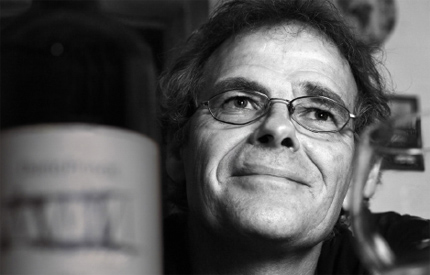Dario Princic
VISIT THIS PRODUCER'S WEBSITE
LOCATE ON GOOGLE MAPS
VISIT IMPORTER'S WEBSITE
Country of Origin: Italy
Location: Oslavia, Collio Goriziano
People: Dario Prin?i?, Owner & Winemaker
Viticulture: Practicing Biodynamic
Items
Dario Prinčič's home and winery are located in the village of Oslavia in the wine region Collio Goriziano (Collio). Technically in Italy, the winery is just steps from the Slovenia border. When speaking with Katia, Dario’s niece, it becomes clear that their family is more Slovenian in culture than Italian. This is an area with a complicated, war-torn history, which is important to understand and impossible to forget when visiting Dario.
In Prinčič’s vineyards looking south, one can see Gorizia (Italy) and Nova Gorica (Slovenia). This city was once the thriving capital of a province in the old Austro-Hungarian Empire. During the First World War, Gorizia was a strategic objective for the Italians. Collio means hill, and main WW1 battles were fought on the large hills/foothills of the Julian Alps that surround Gorizia. Mount Sabotino is northeast of Prinčič. It is the tallest peak in the Collio wine region and an important stronghold in WW1. Looking directly north is an imposing white marble monument, Sacrario di Oslavia, built in memory of the soldiers who died in the area. Only about a 6 minute walk from Prinčič's vineyards, the memorial holds the remains of 57,741 Italian soldiers who died in the battles of Gorizia, and of 540 Austro-Hungarian soldiers.
The western part of Gorizia was annexed to Italy after WW1 while the eastern part became Slovenian. This split Gorizia in two—a city divided by the Iron Curtain in language, culture and politics. While the land changed nation states, many on the Italian side connected strongly (and still do) to their pre-WW1 heritage, which is more Slovenian in nature. Today, the physical boundary is no longer, allowing easy passage from one side of the city to the other. But check points and signs remain as a stark reminder of the not-so-distant past.
So what does this history lesson have to do with the region’s wine and Dario?
Orange wine may be on trend, but for the Oslavia region in eastern Friuli, it’s history. Its borders passed back and forth between Italy and Yugoslavia during the wars of the 20th century, and these political upheavals had a direct effect on its winemaking. Initially a white wine region in Slovenia, a small cadre of producers in Oslavia and Collio went in the opposite direction and started making skin fermented white wines. They began treating their white grapes like red grapes (i.e., extended skin contact) when the region became part of the red-wine-dominant culture of Italy. Not all white grapes do well with this treatment, but fortunately they had Ribolla Gialla at hand. Equally fortunate, they also had Dario Prinčič.
Dario Prinčič grew up among his father’s vines, at the family winery that dates back to 1933. When Dario took over in 1988, he ceased use of chemicals and has been working organically/semi-biodynamically ever since. In 1999, he started to experiment with maceration. These were the early days of the skin-contact movement. Josko Gravner and Stanislao Radikon have received the most attention and credit for pioneering this movement, but Dario Princic was there in the early days too and has been hugely influential, if not as famous.
Today, his grapes come from 10 hectares of clay and sandstone vineyards facing southeast. The vineyards are so steep that everything must be picked by hand, which follows with his ethos of making wines naturally. The grapes are destemmed and placed in open wood vats for maceration with no temperature control, no added yeast, and no sulfites. He relies on the grapes and their skins to do the heavy lifting: with 8- to 45-day macerations, depending on the grape, and 3 or 4 daily punch downs. He never filters or fines before bottling (expect some sediment). What results are contemplative, complex wines that reward patience. If you can wait, hang on to these bottles for five to ten years to get a sense of how a serious orange wine can evolve. If you can’t, decant!

